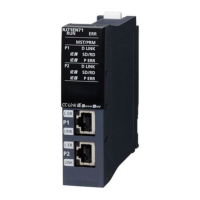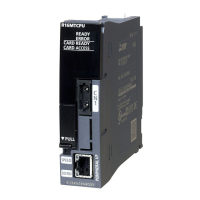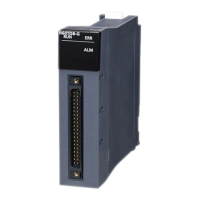15
TERMS
Unless otherwise specified, this manual uses the following terms.
Term Description
Adapter A station type of EtherNet/IP that corresponds to slave stations
API An abbreviation for Actual Packet Interval.
A communication cycle that is decided by the target during communications between EtherNet/IP devices.
Buffer memory A memory in an intelligent function module, where data (such as setting values and monitoring values) are stored.
When integrated into the CPU module, this memory refers to a memory area for storing data such as setting values and
monitored values of the Ethernet function and data used for data communication of the multiple CPU system function.
Consumer Tag Another name for the Consumed tag
CPU module A generic term for the MELSEC iQ-R series CPU module
Device A device (X, Y, M, D, or others) in a CPU module
DHCP An abbreviation for Dynamic Host Configuration Protocol. A protocol used for automatically assigning the information
required for the network such as an IP address.
Disconnection A process of stopping data link if a data link error occurs.
Engineering tool Another name for the software package for the MELSEC programmable controllers
EtherNet/IP An industrial Ethernet protocol offered by ODVA.
EtherNet/IP Configuration Tool An abbreviation for EtherNet/IP Configuration Tool for RJ71EIP91.
A tool for setting the network configuration for EtherNet/IP.
EtherNet/IP device A generic term for devices, personal computers, and other equipment connected via EtherNet/IP for data
communication
Global label A label that is valid for all the program data when multiple program data are created in the project. There are two types
of global label: a module specific label (module label), which is generated automatically by GX Works3, and an optional
label, which can be created for any specified device.
Intelligent function module A module that has functions other than input and output, such as an A/D converter module and D/A converter module
Label A label that represents a device in a given character string
Module label A label that represents one of memory areas (I/O signals and buffer memory areas) specific to each module in a given
character string. For the module used, GX Works3 automatically generates this label, which can be used as a global
label.
Originator An EtherNet/IP device that transmits a connection establishment request of EtherNet/IP
PPS An abbreviation for Packet Per Second. The number of packets that can be processed per second.
Producer Tag Another name for the Produced tag
Return A process of restarting data link when a faulty station recovers from an error
RPI An abbreviation for Requested Packet Interval.
A communication cycle that is decided by the originator during communications between EtherNet/IP devices.
Scanner A station type of EtherNet/IP that corresponds to the master station
Subnet mask A number used to logically divide one network into multiple subnetworks and manage them easily. The following
networks constructed with EtherNet/IP are available.
• A small-scale network system in which multiple devices are connected to one EtherNet/IP network
• A medium-scale or large-scale network system in which multiple small-scale network systems are connected through
a router
Target An EtherNet/IP device that transmits a connection establishment request of EtherNet/IP

